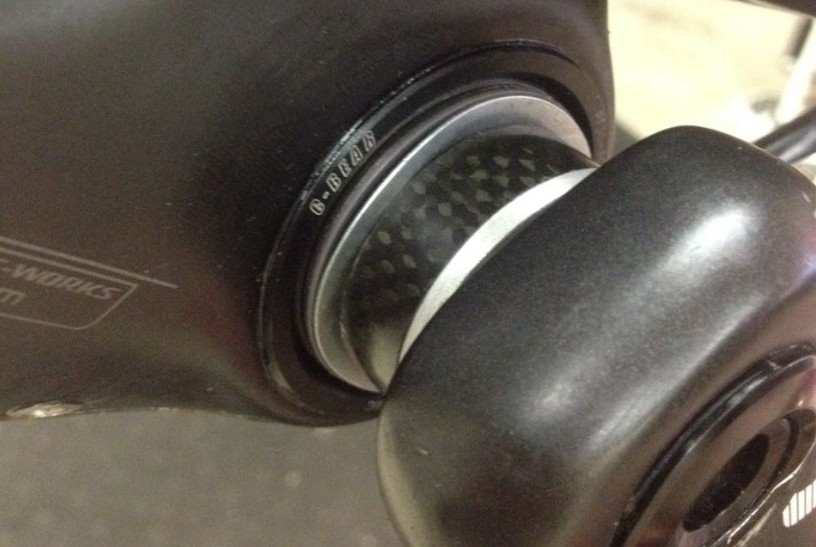Back in the day, bottom-brackets would screw into frames, and there were only two standards – English or Italian (referring to the thread of the BB). However, screw in (BSA) BB shells are fewer and fewer with all sorts of new standards and types. A bewildering amount. I can count 10 distinct types without thinking too hard, which means there are probably at least 20 or 30 out there…
Press Fit 30 (PF30) is probably the most popular new standard, literally just pressing into the BB shell (hence the PF) and having an inside diameter of 30mm (hence the 30).
C-Bear are a Belgian company specialising in ceramic bearings. Pretty niche – I’ll grant you, but their specialism means they can focus on the things that matter. It also means they produce many many different types of bearings. Their website makes it very easy to select the product however – despite the bewildering choice of options (BB386 with a Clavicular crank anyone?)
Initial Impressions
The first real difference you notice about the C Bear when comparing it to stock PF30 BBs is that the shell is made of aluminium, rather than plastic. As a result, in your hand at least, it feels like a higher quality product – looks like it’s actually been ‘made’ rather than merely stamped out of a mould.
The bearings themselves were super smooth, and being ceramic you would hope so. They came lightly greased and ready to go.
Although it wasn’t required specifically for the test, I took the opportunity to create my own ‘preload / spacing’ solution for the Specialized S-works carbon cranks, as the pre-load adjuster that is stock to the bike didn’t fit perfectly with the C-Bear bearings. I took a regular BB30 wavey washer, and mated it to a reamed out (carefully, with a file) carbon headset spacer to create a super reliable, and rock-solid set-up.
In Use
Often with Press Fit BBs there is an issue with creaking or squeaking – this is a natural thing – as the materials contract or expand with heat or moisture. I took the advice of many, and also used an epoxy glue on the outside shell of the BB, prior to pressing it in, literally gluing it in place – to mitigate against this trail-peace destroying nightmare.

The tolerances on the C-Bear were exact, and pressing it into the BB shell of the Epic was a doddle. Smooth, and without any alignment issues. She pushed in perfectly first time, I wiped the excess epoxy from around the edge of the shell, and that was that. The epoxy might have been overkill, but the BB I removed had been epoxied, so it seemed right to repeat that process.

Pressing it in.
It is hard to measure the smoothness of a bearing beyond saying “its very smooth”. But, with the chain removed, the cranks will spin for a very long time with a little push. Literally no resistance. This is the same after 6 months of ownership and use. Use which has included some of the finest mud in Australia, and also the threat posed by high pressure hoses.

Sure – I haven’t aimed the water directly at the BB – but who does that? I have cleaned my bike without specific regard for the BB, and it has not issued a murmur or creak of protestation. There is no play, or rocking or looseness. It’s like the day I put it in.
While it’s hard to get too excited over expensive bearings. No-one will even see the incredible investment you have made in your bike. I understand that other things have much more bling. However, this BB has been a pleasure. It pushed in easily, spins freely, has required no maintenance, and has given me not one moment of trouble. I couldn’t give it a more enthusiastic or positive review. It’s a BB after-all, so it’s not so exciting!
Hits: Does everything it is expected to do perfectly, everytime it has been asked. Is a very ‘undercover’ upgrade for your bike.
Misses: More expensive than a ‘generic’ PF30 BB. Is a very ‘undercover’ upgrade for your bike
RRP: 119 Euro on website
From: www.c-bear.com
